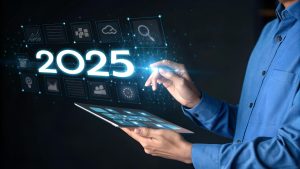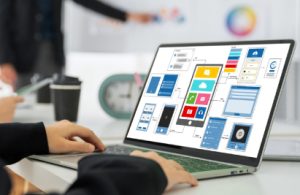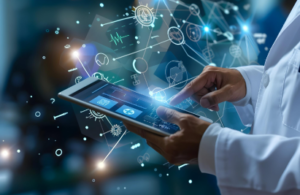As we navigate 2025, the software development landscape is undergoing a seismic shift driven by emerging technologies, evolving user demands, and a focus on sustainability. Staying ahead requires understanding these transformative trends. Here’s a deep dive into the top 10 innovations redefining the industry this year.
1. AI-Driven Development: The Rise of the "AI Developer"
Artificial Intelligence is no longer a futuristic concept it’s now an integral part of the developer toolkit. AI tools like GitHub Copilot are automating code generation, bug detection, and even predictive analytics, reducing development cycles by up to 40%. Beyond coding, AI enhances testing accuracy and personalizes user experiences through adaptive algorithms. For instance, AI-powered platforms analyze user behavior to tailor interfaces in real time, boosting engagement. Companies like Microsoft are embedding AI into their SDLC (Software Development Life Cycle) to preempt vulnerabilities, signaling a shift toward intelligent, self-improving systems.
2. Low-Code/No-Code Platforms: Democratizing Development
By 2025, 70% of new business applications will leverage low code/no-code platforms, empowering non-technical users to build solutions via drag-and-drop interfaces. Salesforce Lightning and similar tools enable rapid prototyping, cutting time-to market for startups and enterprises alike. This trend bridges the IT skills gap, fostering innovation across departments from HR creating custom CRMs to retailers designing bespoke e-commerce apps.
3. Quantum Computing: Solving the Unsolvable
Though still nascent, quantum computing is unlocking breakthroughs in cryptography, drug discovery, and financial modeling. IBM and Google are pioneering quantum processors capable of outperforming classical computers in specific tasks, such as simulating molecular interactions for healthcare research. In 2025, expect hybrid models combining classical and quantum systems to optimize resource allocation and AI algorithms.
4. Edge Computing: Powering Real-Time Intelligence
With IoT devices projected to exceed 75 billion by 2025, edge computing is critical for processing data locally. Autonomous vehicles, for example, rely on edge systems to analyze sensor data instantly, reducing latency by 50% compared to cloud dependent models. Industries like manufacturing and healthcare are adopting edge architectures to enable real-time analytics and enhance privacy by minimizing data transmission.
5. Blockchain Beyond Cryptocurrency: Trust Through Transparency
Blockchain’s decentralized ledger is revolutionizing supply chains, healthcare, and finance. Walmart uses blockchain to track food shipments, improving traceability and safety. Smart contracts automate transactions securely, while DeFi (Decentralized Finance) platforms are reimagining banking without intermediaries. This technology’s immutability also bolsters cybersecurity, a growing concern in 2025.
6. DevSecOps: Security as a Core Pillar
Cyberattacks cost businesses $10.5 trillion annually in 2025, making DevSecOps indispensable. By integrating security into every phase of development from coding to deployment organizations reduce vulnerabilities by 60%. Automated tools like AI-driven threat detection and Infrastructure-as-Code (IaC) frameworks ensure compliance and resilience, particularly in regulated sectors like finance.
7. Progressive Web Apps (PWAs): Bridging Web and Mobile
PWAs dominate 2025 with their offline functionality, push notifications, and app-like performance. Companies adopting PWAs report a 137% surge in user engagement and 42% lower bounce rates. Their single-codebase design slashes development costs while ensuring cross-platform compatibility, making them ideal for businesses targeting global markets.
8. Sustainable Software Engineering: Coding for the Planet
Green coding practices are gaining traction as data centers account for 3% of global energy consumption. Developers now optimize algorithms for energy efficiency, while cloud providers like Google prioritize renewable energy solutions. Sustainable frameworks, such as energy-aware microservices, align with corporate ESG goals, reducing carbon footprints without compromising performance.
9. 5G-Powered Applications: Speed Meets Scalability
The global rollout of 5G is enabling ultra-low latency (under 1ms) and blazing-fast speeds (up to 10 Gbps). This fuels advancements in IoT, AR/VR, and real-time analytics smart factories, for instance, use 5G to synchronize robotic systems instantaneously. Mobile apps now deliver 4K streaming and immersive gaming experiences, redefining user expectations.
10. Extended Reality (XR): Immersive Digital Experiences
AR/VR technologies are transforming industries beyond gaming. IKEA’s AR app lets customers visualize furniture in their homes, boosting sales by 30%. Meanwhile, enterprises like Porsche use mixed reality (MR) headsets for employee training and virtual collaboration, cutting costs and enhancing productivity.
Conclusion: Adapt or Fall Behind
The software development trends of 2025 underscore a future where agility, security, and sustainability are non-negotiable. From AI-augmented workflows to blockchain’s transparency, businesses must embrace these innovations to stay competitive. Partnering with tech-savvy firms like Mitrais or Bacancy can streamline this transition, ensuring your solutions are both cutting-edge and future-proof.
As the digital landscape evolves, one truth remains: innovation is the only constant. Stay curious, adapt swiftly, and let these trends guide your next breakthrough.





